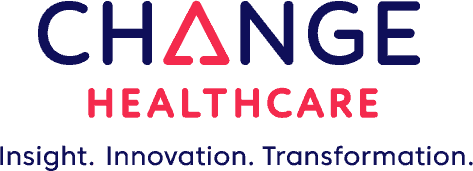|
Esperion’s Milestone Faceoff | TEER Outcomes
March 20, 2023
|
|
|

|
|
Together with
|

|
|
|
“If necessary, the Company intends to enforce its contractual rights and seek the milestone payments it believes it is entitled to.”
|
|
Esperion Therapeutics’ SEC FORM 8-K filing after Daiichi Sankyo revealed that it doesn’t intend to pay Esperion the milestone payments from their bempedoic acid alliance.
|
|

|
|
Esperion and Daiichi Sankyo went from partners to adversaries last week, after Daiichi revealed that it doesn’t plan on paying Esperion the $440M in milestone payments associated with its bempedoic acid cholesterol drug (aka Nexletol in US, Nilemdo in EU).
Daiichi Sankyo agreed to license bempedoic acid’s European commercialization rights in 2019 for $300M, plus up to $900M in milestone payments. Much of those milestones were tied to bempedoic acid’s expansion to new indications by proving its ability to reduce CV risks including:
- $200M – For achieving 15% to 20% risk reduction in its EU regulatory label
- Or $300M – For >20% relative risk reduction on its EU label
- Plus $140M – For other regulatory achievements, including CV risk reduction on its US label
The milestone dispute stems from Esperion’s recent 14k-patient CLEAR Outcomes trial, which showed that Nexletol reduces statin-intolerant patients’ LDL-C (-20%), risk of MI and revascularization (-23% & -19%), and a composite of CV death and nonfatal CV events (-13%, MACE-4, the primary endpoint).
Those results generated major buzz at ACC, and were celebrated by the folks at Esperion as proof of bempedoic acid’s risk-reducing capabilities. In fact, Esperion plans to use that proof to support new FDA and EU regulatory filings in the coming months.
However, Daiichi Sankyo wasn’t as impressed, arguing that since Nexletol’s 13% MACE-4 reduction was below the companies’ agreed-upon ranges, it’s off the hook for all of those milestone payments.
Esperion of course “strongly disagrees” with that interpretation, countering that its 23% reduction in fatal and non-fatal MI means that Daiichi Sankyo actually owes the highest $300M milestone payment (for >20% risk reduction). And Esperion appears very prepared to take that argument to court.
The results of that case might be crucial for Esperion’s financial situation, after posting a $234M net loss in 2022 on $75.5M in revenue. It will also go a long way towards regaining Wall Street’s confidence, after seeing its stock fall by 61% late last week and by 75% since early March.
The Takeaway
When Esperion and Daiichi first partnered in early 2019, they seemed bullish about how the alliance would allow bempedoic acid to achieve its clinical and commercial potential. After four years of unsteady progress and a looming legal battle over the CLEAR results, Esperion’s path forward currently seems anything but clear.
|




|
|
Preparing for the Future of Cardiovascular Data and Analytics
There’s plenty of short term benefits to cardiology data analytics, but it’s just as important for providers to make sure they’re ready for the future of cardiology analytics. This Change Healthcare article with Dr. Jennifer Hall, chief of data science at the American Heart Association, examines what technology leaders can do today to facilitate their future advancements in cardiovascular data and analytics.
|
|
A New Standard of Cardiovascular Care
Heart disease is the leading cause of death, so it might be time to change how we think about heart attack prevention. Read Cleerly’s manifesto on why our current approach is unsustainable, how Cleerly’s AI-based platform can transform care, and what it will take to change today’s unacceptable heart disease statistics.
|
|
Making the Leap to Outsource Post-Processing
Interested in how to outsource cardiac image post-processing, but not sure where to start? PIA walks you through how to assess and compare vendors, understand pricing models and payment options, and outline your requirements to identify vendors who meet your clinical needs.
|
|
- TEER’s Impressive 5-Year Outcomes: Five-year follow-up data from 614 heart failure patients with moderate-to-severe secondary mitral regurgitation revealed that transcatheter edge-to-edge repair (TEER) combined with medical therapy led to significantly improved outcomes compared to medical therapy alone. TEER-treated patients experienced lower rates of annualized hospitalization (33.1% vs. 57.2%), all-cause mortality (57.3% vs. 67.2%), and heart failure-specific death or hospitalization (73.6% vs. 91.5%).
- Shockwave’s Large Peripheral IVL Catheter: Shockwave Medical expanded its intravascular lithotripsy lineup to larger-diameter catheters, with the FDA approval and US launch of its new Shockwave L6 Peripheral IVL Catheter (8mm to 12mm). The Shockwave L6 is built to modify calcification in difficult-to-treat lesions in large peripheral vessels, including the iliac and the common femoral arteries, which have historically been challenging with standard endovascular techniques. The new L6 catheter joins Shockwave’s M5+ (3.5 to 7mm) and S4 catheters (2.5 to 4mm).
- AF Ablation Not Harmful to Glucose Levels: Atrial fibrillation ablation procedures don’t cause significant harmful changes in glucose levels, suggests a study of 78 nondiabetic patients. The study included 58 patients with AF and 20 “control” patients with supraventricular or ventricular arrhythmias. Glucose levels consistently rose during ablation procedures, with AF patients experiencing a greater increase, possibly due to mental and physical stress from conscious sedation, longer procedure times, and pre-existing glucose tolerance impairments. Glucose levels were still elevated 72 hours post-procedure, but were not pathologically significant.
- FIRE1 Adds $25M for HF Monitoring: FIRE1 completed a $25M financing round (total funding now ~$82M) that it will use to continue the development of its heart failure monitoring sensor. The FIRE1 system continuously measures the inferior vena cava for fluid buildup, and alerts clinicians of signs of worsening heart failure. FIRE1 has some healthcare heavyweights in its corner, as its latest round included Medtronic and Novo Holdings (Novo Nordisk and Novozymes controlling shareholder), and Covidien (now part of Medtronic) was among its early investors.
- High Economic Cost of SGLT2 Inhibitors: An economic evaluation published in JAMA Cardiology suggests that at 2022 drug prices, adding an SGLT2 inhibitor to standard of care led to intermediate or low economic value. Using simulated data from 12k patients, the authors found that SGLT2 inhibitors were associated with 0.19 quality-adjusted life-years (just 69 days) and an additional $26,300 in healthcare costs. With that, the authors suggested that efforts to expand access to SGLT2-I for HF should be coupled with efforts to lower the drug’s cost.
- Cardiovalve’s US Implant: Montefiore Medical Center recently performed the first Cardiovalve tricuspid valve replacement implantation in the US. The Cardiovalve transcatheter interventional replacement system is intended for patients with severe mitral or tricuspid regurgitation, and is highlighted by its less-invasive transfemoral approach and reportedly safer short frame design. Cardiovalve endured a long road to get to this point, including acquisitions, spinoffs, and high profile patent battles, before being acquired by Chinese structural heart company Venus Medtech last year, and now achieving this milestone at Montefiore.
- Prior Auths Leading to Care Delays: The 2022 AMA Prior Authorization Physician Survey revealed that practices are completing more prior authorizations than last year and seeing more care delays as a result. Over 88% of the 1k physicians surveyed described the process as a high burden, with practices completing an average of 45 prior auths per physician weekly. The majority of physicians (86%) felt that prior authorizations lead to higher utilization of healthcare resources – pretty much the exact opposite of what they were designed to prevent.
- Comprehensive Intervention Optimizes Preventive Care: Duke researchers showed that coordinated, multifaceted interventions (w/ assessment, education, and feedback) can improve medication adherence among people with type 2 diabetes and ASCVD. After 12 months, intervention group patients were far more likely to be prescribed all three guideline-directed medications (odds ratio: 4.38) and each medication individually than the usual care group (odds ratios: 1.73, 1.82, and 3.11 for high-intensity statins, ACEIs or ARBs, and SGLT2 inhibitors and/or GLP-1RAs).
- Ambulatory Diagnostic Cardiology Growth: Signify Research forecasts that the global ambulatory diagnostic cardiology market will maintain a robust 14.4% CAGR from 2022 through 2026 when it reaches $3.3B. Healthcare’s shift to remote and ambulatory settings, along with wearable product improvements and rising reimbursements, will drive significant growth for Mobile Cardiac Telemetry and Long-Term ECG products. Meanwhile, once-dominant Implantable Cardiac Monitors (ICMs) continue to lose share to remote and externally-worn options.
- TEE Complications: The use of transesophageal echocardiography (TEE) to guide transcatheter structural cardiac interventions was associated with a relatively high rate of major complications during the last decade. Among 12k patients who underwent TEE-guided interventions between 2012 and 2022, 429 patients had major complications within 72 hours (3.6%), with the highest complication rates among the elderly (3.9% >65yrs vs. 2.2% <65yrs) and patients on anticoagulant or antiplatelet therapy (3.9% vs. 0.5% not on therapy).
- 2023 Match Breaks Records: The 2023 Match saw a record number of applicants to U.S. residency programs. In all, 42,952 applicants participated, applying for 40,375 certified positions. This growth was partially driven by international medical graduates (+707 applicants), while the number of U.S. medical student seniors declined (-236 applicants).
|
|
Creating A Novice Heart Failure Screening Pathway
We hear a lot about AI’s potential to expand echocardiography to far more users and clinical settings, and a study using Us2.ai’s AI-automated echo analysis and reporting solution showed that echo’s AI-driven expansion might go far beyond what many of us had in mind.
|
|
HeartFlow FFRct’s Clinical Data Foundation
HeartFlow FFRct Analysis’ widespread payor support and adoption by 80% of the top 50 US heart hospitals is built on a deep foundation of peer-reviewed clinical research. See how HeartFlow FFRct has consistently proven to reduce unnecessary angiograms and the cost of care, making it a “game changer” for its users.
|
|
Reducing ECG Background Noise
Monebo’s Kinitec Rhythms ECG Algorithm separates true ECG signals from background noise, leading to more accurate diagnoses and improved operator efficiency. See for yourself how the algorithm measured up to a gold standard.
|
|
|
|
|